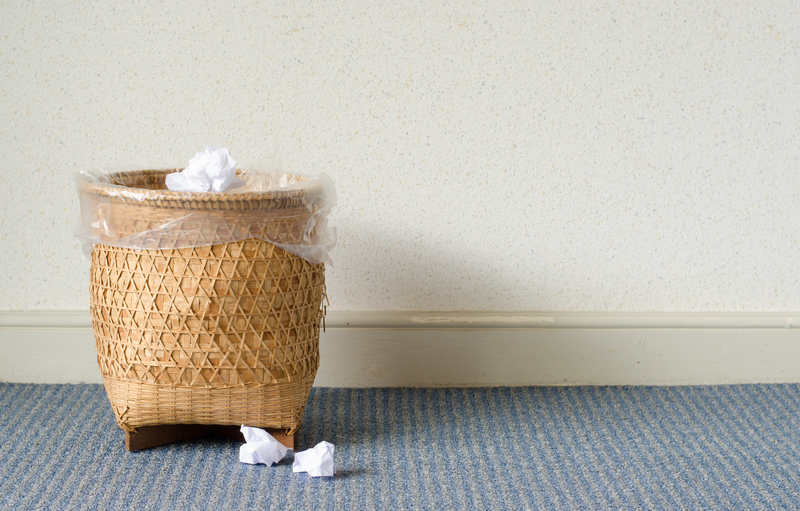How to Make PPE Waste Disposal Safe for You and the Planet
Personal Protective Equipment (PPE) waste has surged worldwide, especially since the onset of the COVID-19 pandemic. From medical facilities to households, PPE items like masks, gloves, gowns, and face shields have become a staple for safety. However, improper disposal of PPE waste threatens both human health and environmental well-being. In this comprehensive guide, we'll explore the best strategies on how to make PPE waste disposal safe for you and the planet, helping you protect yourself and contribute to global sustainability efforts.
Understanding PPE Waste and Its Challenges
PPE materials are typically made of different plastics and synthetic fibers designed to create effective barriers against pathogens. Unfortunately, these materials--and the sheer quantity they are produced in--present significant disposal challenges. The most common PPE waste items include:
- Masks (surgical, N95, cloth face coverings)
- Gloves (latex, nitrile, vinyl)
- Gowns and aprons
- Face shields and goggles
- Shoe covers, head covers, and other protective gear
These items are often intended for single-use, causing heaps of waste. If not properly disposed of, PPE waste can introduce harmful pathogens into the environment, contribute to plastic pollution, and threaten wildlife. Therefore, developing safe and sustainable PPE disposal practices is crucial.

The Environmental Impact of Improper PPE Waste Disposal
Improper PPE disposal has led to an environmental crisis with visible effects:
- Wildlife endangerment: Animals can get entangled in masks and gloves or ingest plastic parts, causing injury or death.
- Pollution of water and land: Discarded PPE flows into rivers and oceans, breaking down into microplastics that are harmful to aquatic life and eventually enter the food chain.
- Increased disease transmission risk: Used PPE can harbor pathogens, exposing sanitation workers and the public to health hazards.
To combat these challenges, it's essential to adopt responsible PPE waste disposal methods that prioritize both public safety and environmental protection.
Best Practices for Safe PPE Waste Disposal
1. Separate PPE from Other Waste
Always segregate PPE waste from regular household or facility garbage. This reduces the risk of cross-contamination and ensures that PPE is treated with the necessary precautions.
- Designate a specific, clearly marked bin for disposable PPE.
- Use gloves when handling used PPE waste.
2. Secure PPE Waste Properly
After collecting used PPE, double-bag the waste using strong plastic bags to prevent leaks or accidental exposure. Tie the bags securely and avoid compressing them to minimize the risk of rupture.
3. Dispose of PPE in Designated Facilities
Many cities have set up PPE-specific disposal points or hazardous waste bins. Whenever possible, use these facilities instead of the regular trash. If specialized services are unavailable, contact your local waste management authorities for guidance.
4. Do Not Recycle Used PPE
PPE such as masks, gloves, and gowns are not recyclable through standard municipal recycling programs. Placing PPE in recycling bins endangers workers and contaminates the recycling stream, rendering it unusable. Always dispose of used PPE as general or hazardous waste.
5. Protect Waste Handlers
All individuals involved in handling or transporting PPE waste should wear suitable protective equipment and wash their hands thoroughly afterward. This minimizes the risk of exposure to potentially infectious waste.
Eco-Friendly Strategies for PPE Waste Disposal
As awareness of environmental issues grows, innovative approaches for eco-friendly PPE waste solutions are emerging. Let's explore sustainable disposal practices that minimize environmental harm.
1. Harness the Power of Incineration (With Caution)
High-temperature incineration is a common method for disposing of medical and hazardous waste, including PPE. It destroys pathogens effectively but releases greenhouse gases and pollutants if not properly managed. Whenever incineration is used, ensure it meets strict environmental standards with advanced filtration systems to mitigate emissions.
2. Explore Pyrolysis and Chemical Recycling
Pyrolysis is an emerging technology that breaks down plastics at high temperatures in an oxygen-free environment. This process converts PPE waste into fuels or raw materials for new products, reducing landfill burden and enabling a circular economy. Check if local facilities offer chemical recycling for PPE waste.
3. Participate in PPE Collection and Recycling Initiatives
Some organizations and companies have piloted PPE recycling programs that accept used masks, gloves, and face shields for specialized processing. These programs use advanced techniques to decontaminate and recycle PPE into new products, such as building materials or road surfaces. Research to find local or national PPE take-back schemes and encourage others to participate.
4. Opt for Reusable PPE Where Appropriate
When possible, choose reusable PPE products that can be sterilized and safely reused, such as washable cloth masks or gowns made from durable fabric. This approach reduces the total volume of PPE waste generated without compromising protection.
5. Educate and Advocate for Better PPE Waste Management Policies
Support policies and regulations that promote sustainable PPE production, responsible consumption, and effective waste management. Encourage local authorities, businesses, and communities to prioritize safe and sustainable PPE disposal practices.
Tips for Households: Safe PPE Waste Disposal at Home
- Designate a PPE waste bag or bin and keep it away from children and pets.
- Never flush masks or gloves down the toilet as they can clog pipes and pollute waterways.
- Wash hands thoroughly with soap and water after handling used PPE.
- Research local guidelines for accessing hazardous waste disposal services in your area.
Safety Considerations for Businesses and Healthcare Facilities
Organizations generating large volumes of PPE waste must adhere to stringent guidelines for collection, storage, and disposal to ensure the safety of workers, patients, and the public.
- Provide training to staff on correct PPE usage and waste segregation.
- Use color-coded bins with clear labels for PPE waste.
- Ensure that PPE waste is stored securely until collection by certified hazardous waste handlers.
- Regularly disinfect waste bins and storage areas.
PPE Waste Disposal in Emergencies
In times of public health crises or natural disasters, the safe disposal of PPE waste is even more critical. Follow emergency recommendations from national and international health agencies to manage increased waste volumes safely.
Innovations and Research in Sustainable PPE Waste Management
Scientists, governments, and companies are developing new technologies and materials to address the environmental impact of PPE waste:
- Biodegradable PPE: Research is ongoing to manufacture masks and gloves from biodegradable polymers that break down naturally, reducing landfill pressure.
- Thermal disinfection and sterilization: Some hospitals now use systems to heat-treat PPE waste, neutralizing pathogens before safe disposal or recycling.
- PPE decontamination for re-use: Advanced sterilization methods allow certain types of PPE to be safely reused, further cutting down waste.
How Individuals Can Make a Difference
Every person's actions matter in tackling the PPE waste problem. Here's how you can contribute to safer and more sustainable PPE waste disposal:
- Be mindful of your PPE usage--avoid unnecessary or excessive use where safe and appropriate.
- Follow community guidelines for disposal to keep your neighborhood and environment safe.
- Educate friends, family, and peers on the risks of improper PPE disposal and the benefits of eco-friendly alternatives.
- Support local initiatives, businesses, and policies focused on sustainability and responsible waste management.

Frequently Asked Questions about PPE Waste Disposal
-
Can I recycle my disposable PPE?
No. Most municipal recycling programs do not accept used PPE, as it poses contamination and health risks. Always dispose of in a designated bin or as directed by local authorities. -
Are biodegradable PPE products available?
Yes, but availability may vary by region. Look for certified biodegradable products and verify proper disposal guidelines. -
Is burning PPE waste at home safe?
No. Home incineration can release toxic fumes and should never be attempted. Always use certified waste management services. -
What should I do if I see PPE littered in public places?
If it's safe, use disposable gloves to collect the item and dispose of it properly. Wash your hands thoroughly after handling any PPE waste.
Conclusion: Building a Safer, Greener Future with Responsible PPE Waste Disposal
Making PPE waste disposal safe for you and the planet requires collective action and informed choices. By separating and securing PPE waste, using designated facilities, and supporting sustainable innovations, we can protect both human health and the environment. Opt for reusable and biodegradable PPE wherever possible, advocate for better waste management policies, and always stay informed about best practices. Together, we can ensure our efforts to safeguard health do not come at the expense of the planet.
Remember: the way we dispose of PPE today will shape the safety of our communities and the environment for years to come.
```